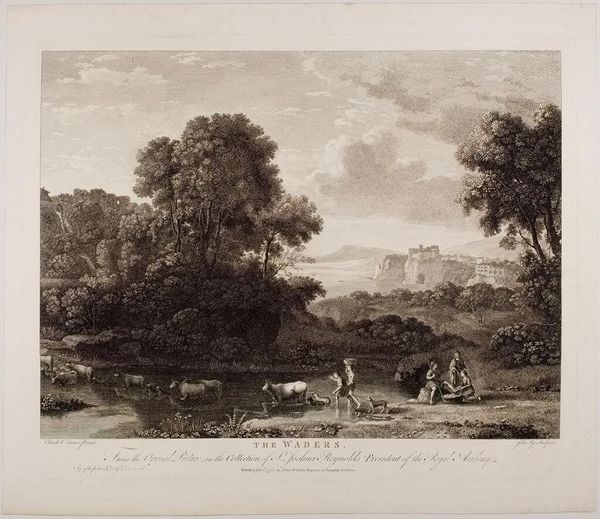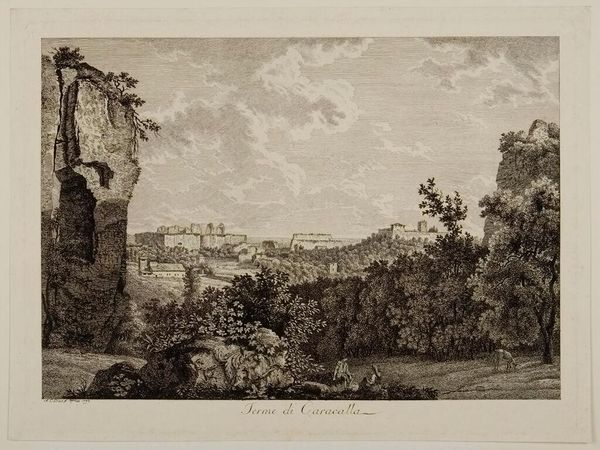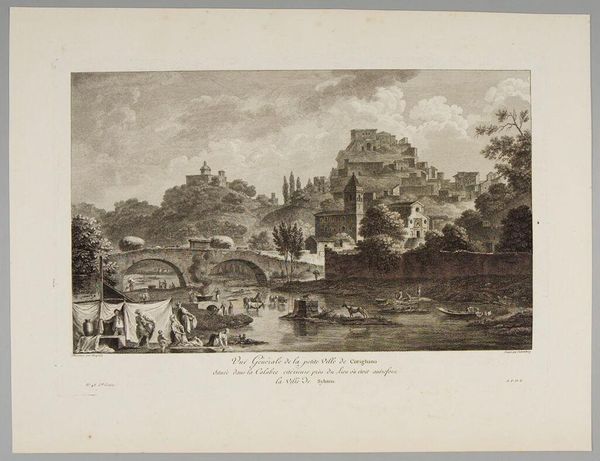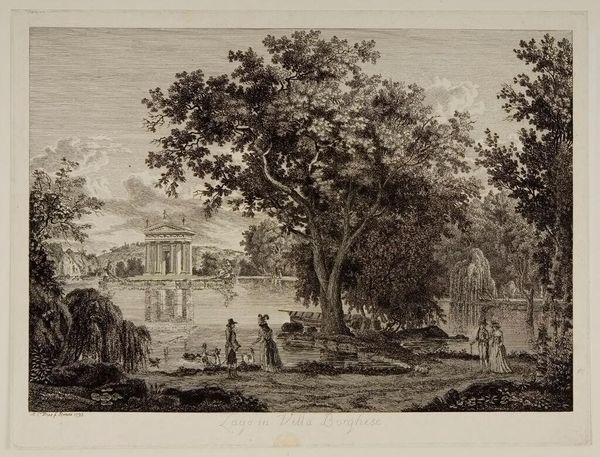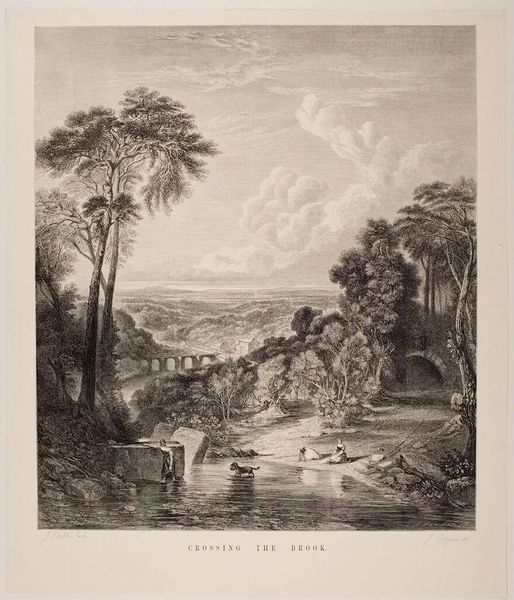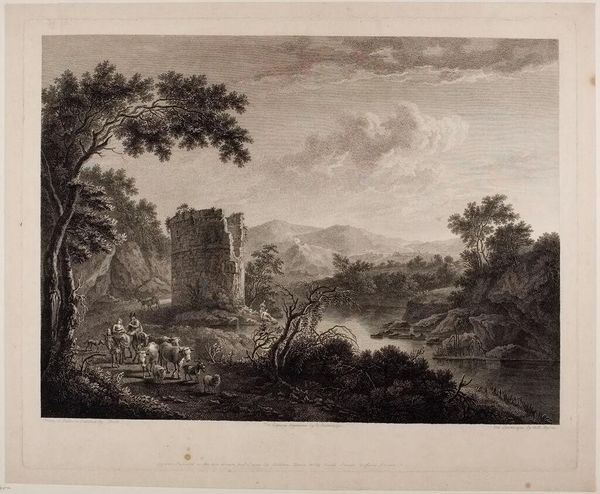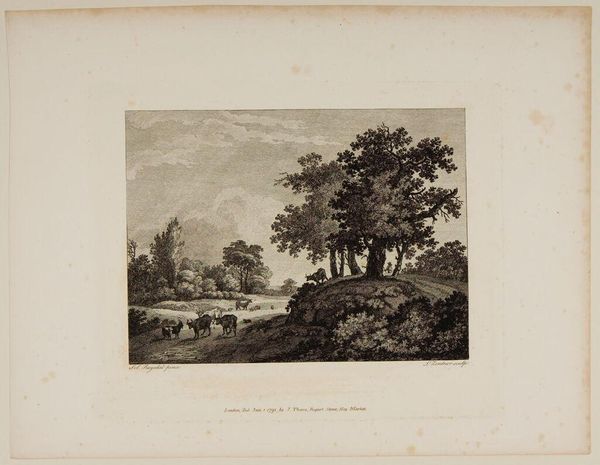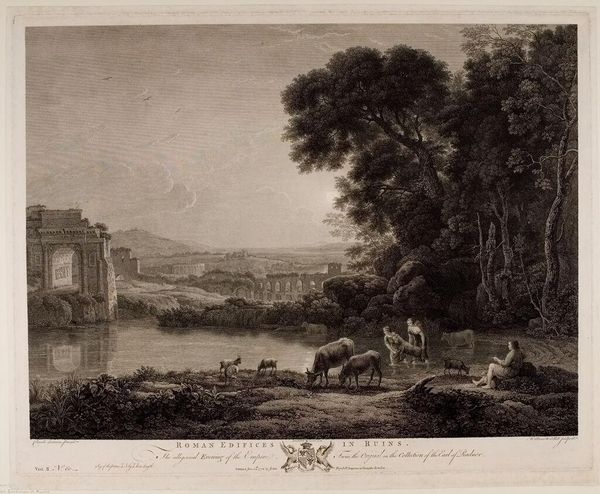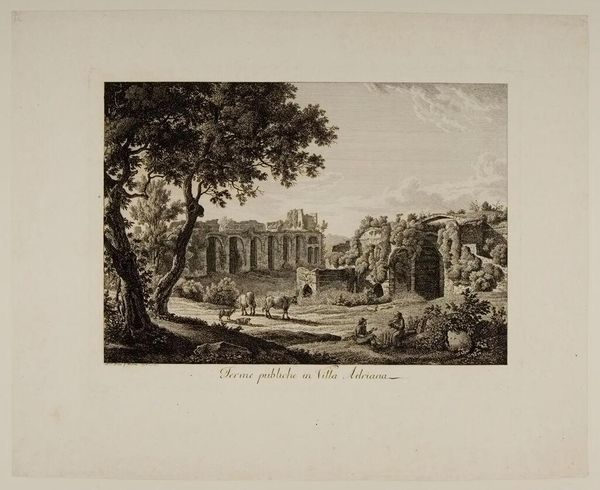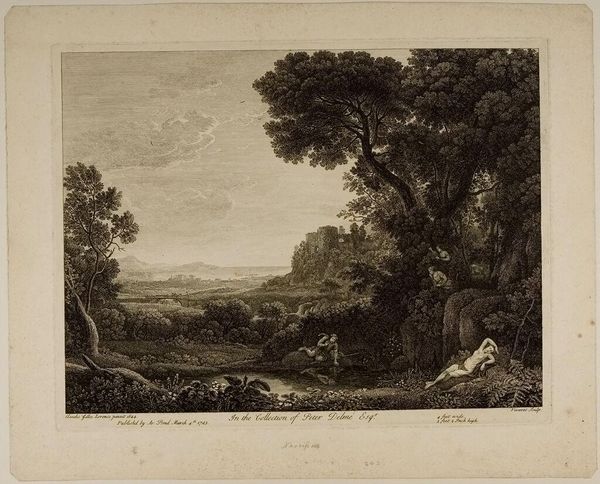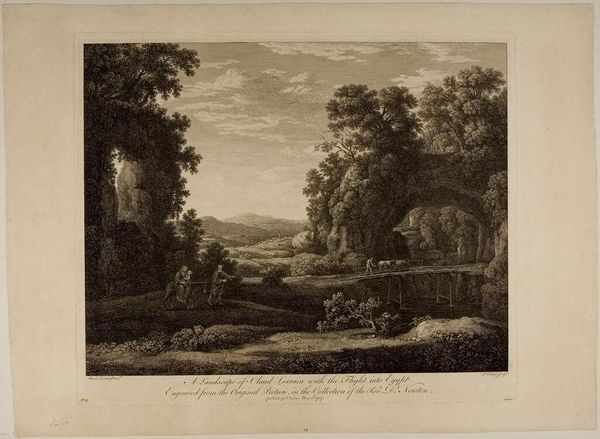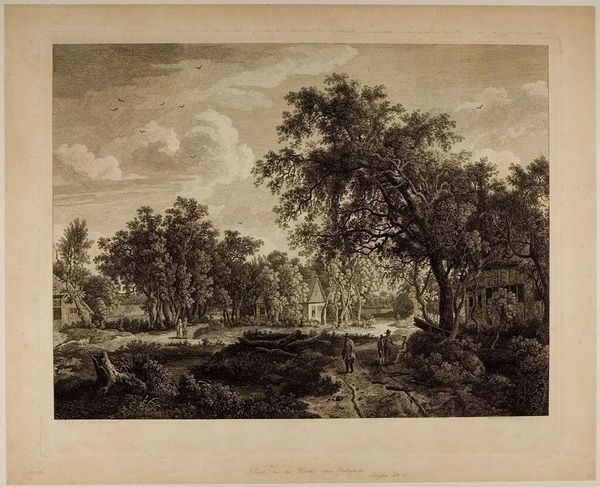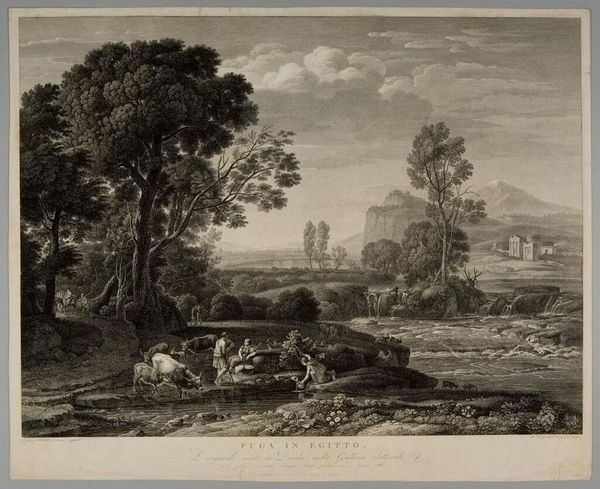
Copyright: CC0 1.0
Curator: This is John Pye the Younger's "Temple of Jupiter in the Island of Aegina," currently held in the Harvard Art Museums. It evokes such a classical, serene scene, doesn’t it? Editor: It certainly romanticizes power and leisure. The Temple, the figures in classical dress...it all feels like a statement about cultural inheritance, albeit one that perhaps ignores the labor and conquest that built such temples. Curator: Precisely! The temple itself, dedicated to Jupiter, embodies Roman authority. These sites were focal points, not just for worship, but for societal governance and communal identity. The composition subtly alludes to those hierarchical power structures. Editor: The staging of figures and the temple's dominance bring to mind questions about the representation of power and the inherent biases in how history is visually conveyed through romanticized art. Curator: Absolutely, and consider how the artist uses the landscape to reinforce this. The orderly procession up to the temple implies a natural order, a divinely sanctioned hierarchy. Editor: While the symbolism of the temple represents power, it's essential to deconstruct the narratives these images promote, questioning whose stories are being told and whose are being erased. Curator: It truly encourages us to contemplate the multilayered historical connotations imbued in classical themes and their enduring resonance. Editor: Indeed, and by recognizing these dynamics, we can approach such art with a more informed, critical perspective.
Comments
No comments
Be the first to comment and join the conversation on the ultimate creative platform.
